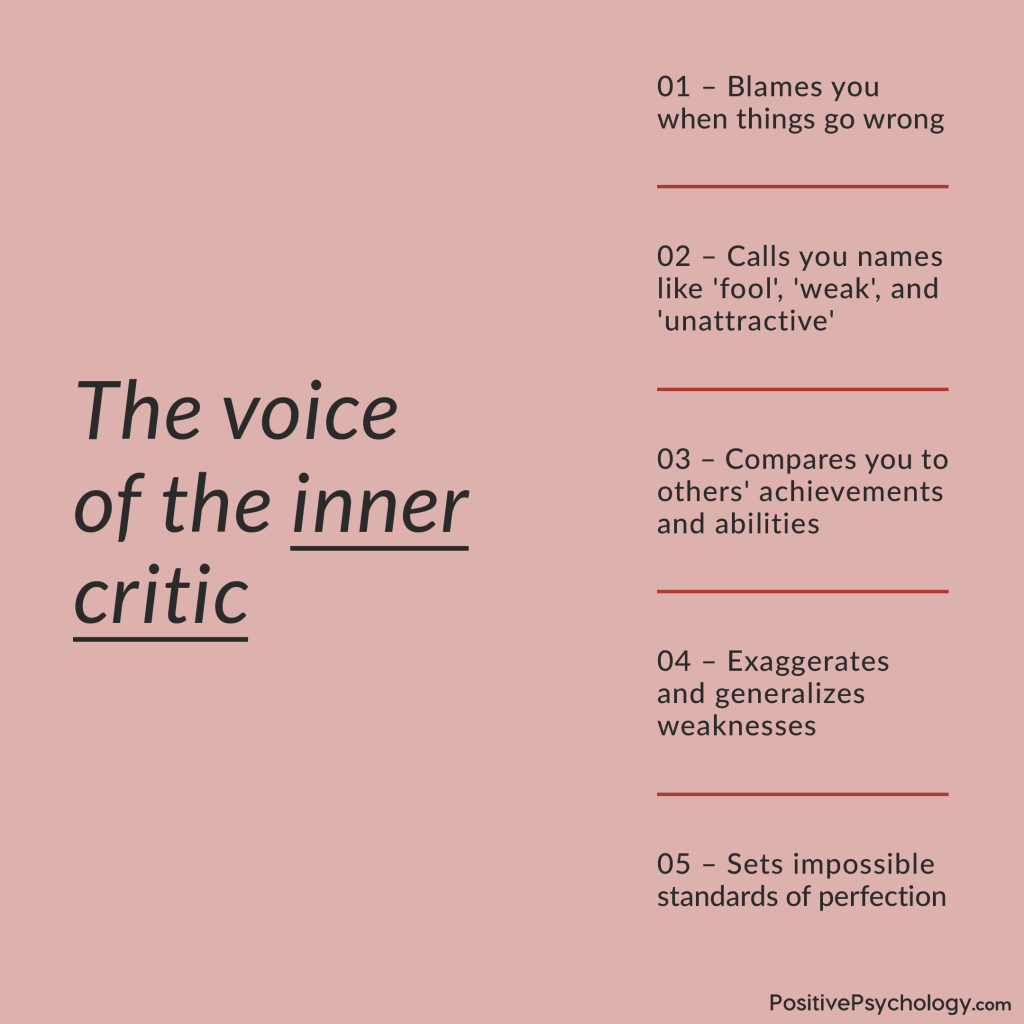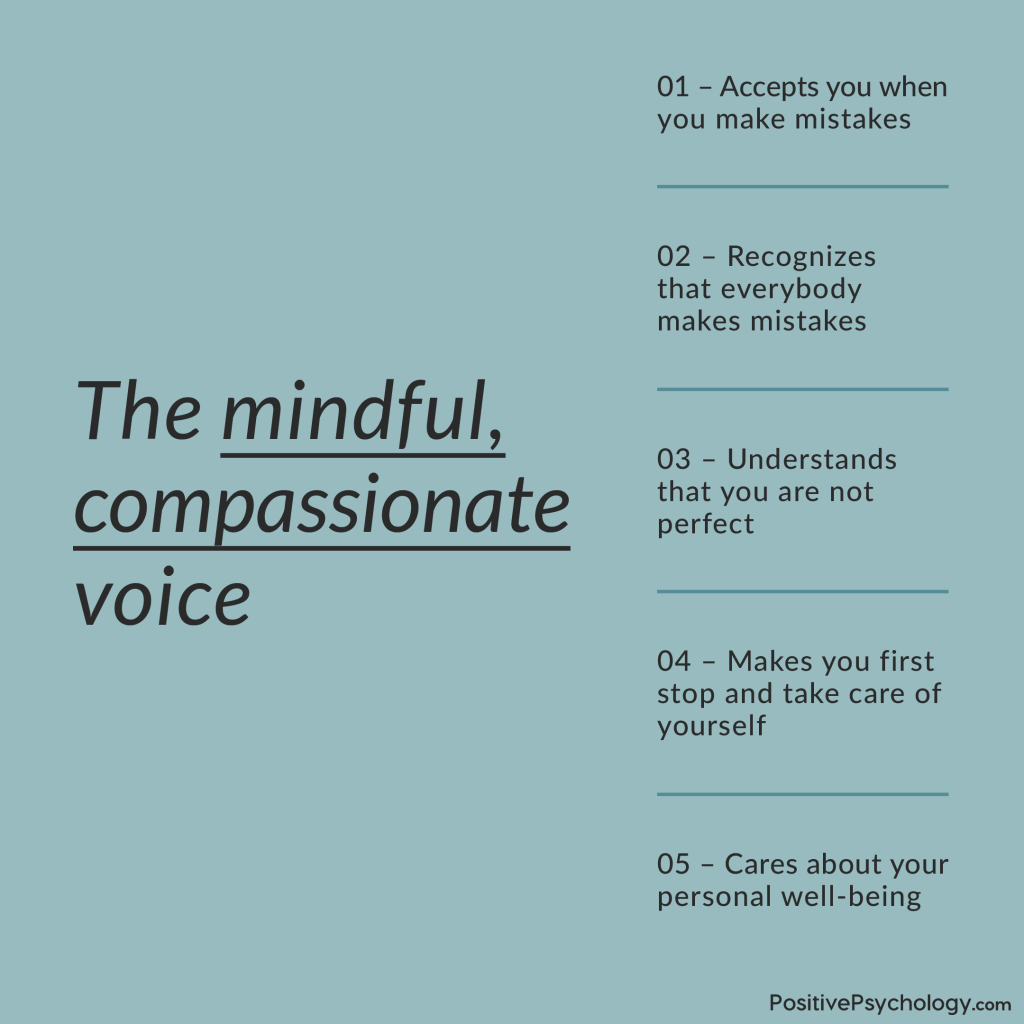19 Self-Image Examples & Tools for a Positive Sense of Self
 Our self-image is all about how we see ourselves. It gives us a sense of our personality and helps give us clarity and understanding about our life.
Our self-image is all about how we see ourselves. It gives us a sense of our personality and helps give us clarity and understanding about our life.
Our self-image is also about how we perceive ourselves in terms of our life. Self-image also determines what kind of person we think we are and what we believe others think about us.
It really boils down to how much we believe in ourselves and in our self-worth. If you hesitate to do things because of what others might think or have thoughts about yourself that you continually want to change, you may have issues when it comes to a healthy self-image.
In this article, we will review what self-image theory is, some examples of it, and ideas to improve your self-image.
Before you continue, we thought you might like to download our three Self-Compassion Exercises for free. These detailed, science-based exercises will help you increase the compassion and kindness you show yourself and also give you tools to help your clients, students, or employees show more compassion to themselves.
This Article Contains:
- What Is Self-Image Theory?
- Using Self-Image Therapy
- 12 Examples of Self-Image
- 4 Questions on Self-Image We Should Be Asking
- A Look at Self-Image in Kids
- 5 Ideas to Improve Self-Image
- 2 Exercises and Activities to Enhance Self-Image
- 3 Useful Worksheets
- 2 Assessments and Questionnaires
- A Take-Home Message
- References
What Is Self-Image Theory?
Self-image is the “total subjective perception of oneself, including an image of one’s body and impressions of one’s personality, capabilities, and so on” (Bailey, 2003).
Other psychologists have asserted that our self-image is our mental picture and has to do with our appearance and the integration of our experiences, desires, and feelings.
Which one is correct, you might ask?
When we have a mental picture of our measurable qualities, we see:
- The unchanging attributes that are present since birth, such as the shape of our eyes
- Any genetic attributes present at birth that might change, such as body proportions
- Any chosen acquired material things we may gather, such as money, possessions, or enhancements that help us define our self-image or public persona (Bailey, 2003)
Self-concept, on the other hand, has been defined as our self-identity, which consists of a schema or organized collection of feelings and beliefs about ourselves (Bailey, 2003).
The issue of self-identity is very complex and multidimensional. It has several components that work together to define who we are and how we identify ourselves.
Similar in concept is self theory, which is comprised of four factors (Business Jargons, n.d.):
- Self-image
- Ideal self
- Real self
- Looking-glass self
Self theory emphasizes a set of perceptions we might have for ourselves and the perceptions and relationships we have with others. Carl Rogers, an American psychologist, contributed significantly toward self theory.
Our self-image refers to what we think about ourselves. This includes our beliefs, such as about who we are, and how these beliefs form our identity.
The ideal self refers to the way we would like to be seen. This image might be very different from our self-image. The ideal self persona acts as a sort of stimulus that can motivate us to engage in activities that can bring us closer to our ideal self.
The real self is basically what others show you concerning your self-image. When others respond to us and share our beliefs about our perception, we take that feedback and adjust our self-image accordingly.
The looking-glass self is about our perception of others’ perception. In other words, tuning into how other people see us and perceive us and comparing that to how we see ourselves.
Using Self-Image Therapy

It’s something we should always be working on. If we receive positive reinforcements in our developing years, we may be more likely to have a healthy self-image in our adult years.
What happens if we don’t receive positive reinforcements during those tender years growing up? If we don’t feel good about ourselves, everything in our life can be affected.
Therapy can help us change the way we feel about ourselves. Working with a caring and supportive therapist can help someone gain a more realistic sense of self and help encourage them to take steps to feel better.
One therapy that is excellent for this is Cognitive-Behavioral Therapy (CBT). CBT can help improve low self-esteem, anxiety, and depression (Fennell, 2005). This type of therapy is often called “person-centered” therapy or “person-centric,” which basically means that you work from the inside out.
While working with a therapist, you can recognize the things that trigger low self-esteem, like looking at yourself in the mirror in a bathing suit. You can begin to see that your opinions are often self-imposed.
Working with a therapist can also help you learn to reevaluate situations and opinions, as you work to reframe and change negative thoughts.
In addition to seeking therapy, there are other things you can do to help boost your self-image, including:
- Monitoring your self-talk
- Learning mindfulness meditation
- Taking a class to be more assertive
- Taking risks to develop your self-awareness skills and improve performance
- Making a gratitude list of things you are grateful for
12 Examples of Self-Image

- You act assertively without guilt.
- You don’t dwell on the past.
- You see everyone as your equal.
- You don’t allow yourself to be manipulated.
- You recognize both positive and negative feelings and share them with others.
- You find yourself doing different things to achieve balance.
- You seek out people who are positive like yourself.
- You accept challenges as opportunities to grow.
- You can handle constructive criticism.
- You are proactive and communicate clearly.
- You value yourself.
- You value other people.
These may seem like little things, but they are actually big things. Doing something small, like acting assertively without being pushy or feeling guilty, is a sure sign of a positive self-image.
Living in the present moment is also powerful. Those who often feel bad about themselves spend a lot of time dwelling on past mistakes. If you can let the past go and move forward, you will feel much better about who you are.
Seeing everyone as your equal is another good sign you have a healthy self-image. People who feel bad about themselves often see other people as better than them. Knowing and recognizing that each of us is the same is a sure sign of a healthy person.
Those with a healthy self-image have learned to honor and recognize both positive and negative feelings without getting caught up in them.
Sharing your feelings with someone else can also help you feel better about what you are going through.
Working to build positive relationships and steering away from people who bring you down can also go a long way to boosting your self-image.
Other things that can be helpful include learning how to take criticism well, accepting challenges as a part of life, and learning how to value yourself.
All of these small things can go a long way to keeping your self-esteem and self-image positive.
4 Questions on Self-Image We Should Be Asking

It defines how we think and feel about ourselves based on our appearance, performance, and relationships. All of these factors play a crucial role when it comes to our happiness and fulfillment in life.
What are some questions we should ask ourselves when examining our self-image?
According to the Cleveland Clinic (n.d.), our self-image is dynamic and always changing. It tends to be a process that occurs over a lifetime.
Here are some questions you can ask yourself to gauge your self-image:
1. What do you like about yourself?
You might be surprised by how good it feels to sit down and reflect on what you like about yourself. Make a handwritten list, and don’t limit yourself to typical things like a nice smile. Try listing things like ‘strong legs’ or appreciating your ability to make time for others. Making this a daily or weekly habit can go a long way toward boosting your self-image.
2. Would you say that to your best friend?
The words you say to yourself every day can have a big impact. If you wouldn’t say something to your best friend, you shouldn’t say it to yourself. Try positive affirmations to move away from this destructive habit.
3. Do you show yourself that you are worthy?
If you don’t treat yourself to beautiful things every once in a while, you are missing out. Allowing yourself to buy something small or even taking a class you’ve wanted to take can make you feel genuinely worthy. In a family situation, you may often feel the need to prioritize the needs of other family members, but you need to look after yourself as well. Spoil yourself every once in a while.
4. Do you have healthy boundaries (Matson, 2016)?
Setting healthy boundaries is something we all need to do. Those who over-commit themselves and/or have difficulty saying no may get pushed around.
If you always apologize to people, you may fall into this category as well. It’s amazing how something simple like setting healthy boundaries can help improve your life and how you feel about yourself.
A Look at Self-Image in Kids

Children with low self-esteem are often self-critical and feel like they aren’t as good as other kids. They also tend to focus more on their failings than on things they do well. Those with a poor self-image might also lack self-confidence and doubt that they can do things well.
When kids feel good about themselves, they tend to have more confidence and try more new things. They are also much more likely to feel proud of the things they accomplish and can even deal with mistakes in a healthy way.
Children with poor self-image may feel very unsure of themselves and like they don’t fit in. As a result, others may treat them poorly, and they may have a hard time standing up for themselves.
Self-esteem and self-image can develop as early as a few months old, believe it or not. It tends to develop slowly over time. If a child gets positive feedback and a lot of attention and loving care, they take those same feelings with them as they get older.
Parents can help build self-esteem in children by:
- Helping children learn to do things by showing them
- Praising children when they truly deserve it
- Praising other things besides getting an A or being smart, such as having a good attitude or making progress
- Being a good role model and leading by example
- Avoiding negative criticism
- Focusing on strengths
Have a look at these Self-Esteem Books for informative material to help you increase kids’ self-esteem.
The invisible force – self-image – enables you to achieve great goals
5 Ideas to Improve Self-Image
There are a number of ways to improve your self-image, based on research. Here are a few examples:
1. Challenge your negative thoughts
Replacing negative thoughts with realistic, positive thoughts can improve self-image (Beck & Beck, 1972).
The first step is to notice negative thinking, challenge these thoughts, and then actively rephrase each in a more positive sense.
2. Practice self-compassion
Self-compassion can improve self-image, and also contribute to improved mental health. A study by Kirsten Nedd (Neff, 2003) found that self-compassion was positively associated with self-esteem.
Treating yourself like you would treat your best friend, is one way of improving your self-compassion.
3. Engage in self-reflection
Consistent and focused self-reflection not only leads to a better understanding of oneself, but also in improved self-image (Markus & Nurius, 1986).
Journaling is a great tool for such self-reflection, and doing this consistently will improve your own self-knowledge.
4. Seek out social support
Having supportive relationships with others can improve your self-image (Leary, 2007).
Ditch toxic relationships, and build and focus on positive relationships with those that care and support you.
5. Engage in physical activity
Regular physical activity can improve self-image and self-esteem (Blumenthal, 1989).
Various aspects are at play here, including improved mood, reduced stress, more confidence in your own body and abilities, and improved fitness.
Interestingly enough, it may be that the consistency of an exercise routine contributes more than the actual amount. Either way, depending on your baseline, moderate exercise such as brisk walking, cycling or swimming can improve your self-image (WHO, 2019; CDC 2020).
2 Exercises and Activities to Enhance Self-Image
Here at PositivePsychology.com we have various exercises and worksheets that can be used to enhance self-image.
Besides this small sample, the Positive Psychology Toolkit© has over 450 tools and exercises to further help enhance self-image and for other practical positive psychology applications.
1. Understanding the inner critic
The goal of this exercise is to help you become more aware of your inner critic.
Examining self-critical thoughts and the way you talk to yourself can help you understand where these thoughts are coming from so you can learn to move away from them.
2. Letter of self-compassion
The goal of this intervention is to promote compassionate thoughts. The more you forgive and accept yourself, the easier it will be to deal with emotions and feelings you are struggling with.
3 Useful Worksheets
These worksheets are also highly beneficial for enhancing self-image.
1. Reframing critical self-talk
This is a wonderful exercise for reframing hurtful thoughts. Most of us are very hard on ourselves. We don’t often stop to think about how much this hurts our self-image. This exercise can help you recognize those times when you are unkind so that you can soften your critical voice.
2. Writing about intensely positive experiences
Research shows us that merely writing about positive experiences can help enhance our mood. This tool involves writing about positive experiences for three days in a row. As you focus on wonderful positive, happy experiences, may start to feel better. These mood tracker charts and ideas can also benefit you over a longer period.
3. Character strength exploration
This worksheet involves reflecting on strengths that you have used in the past. This exercise can be used to enhance your knowledge and acceptance of your own strengths or envision yourself actively working on them.
Related: 12 Strength-Based Skills and Activities to Add to Your Practice
2 Assessments and Questionnaires
Try out these tests to determine the client’s current level of self-esteem.
1. Thoughts and feelings
This tool is based on Acceptance and Commitment Therapy.
Examining your feelings and assessing how in control you feel can help you find ways to enhance your self-image. This Thoughts and Feelings worksheet helps you evaluate various statements and assess your acceptance and control of your thoughts and feelings.
2. The Rosenberg Self-Esteem Scale
The Rosenberg Self-Esteem Scale is a 10-item scale that measures self-worth, both positive and negative, in terms of feelings about the self. All items are answered using a four-point Likert scale from strongly agree to strongly disagree.
The test is useful for measuring how satisfied you feel about yourself as well as how inclined you are to see yourself as a success or failure.
Our article which includes the Rosenberg Self-Esteem Scale, also shares various other self-esteem questionnaires.
A Take-Home Message
The idea of self-image is vitally important. It impacts every area of life. Our self-image is something that develops throughout our entire life.
If you feel good about yourself, you will continue to build that positive self-image. If you don’t feel good about yourself and don’t take steps to counteract those feelings, your self-image will continue to deteriorate.
Nurturing your self-image is probably one of the best things you can do for yourself daily to help you live a happy and fulfilling life.
We hope you enjoyed reading this article. Don’t forget to download our three Self Compassion Exercises for free.
- Bailey, J. A. (2003). Self-image, self-concept, and self-identity revisited. Journal of the National Medical Association, 95(5), 383–386.
- Beck, A. T., & Beck, J. S. (1972). Cognitive therapy and the emotional disorders. New York: International Universities Press.
- Blumenthal, J. A. (1989). Exercise and self-esteem. International Journal of Sport Psychology, 20(1), 1-16.
- Business Jargons. (n.d.). Self theory. Retrieved July 30, 2021, from https://businessjargons.com/self-theory.html.
- Centers for Disease Control and Prevention. (2020). Physical Activity Guidelines for Americans, 2nd edition.
- Cleveland Clinic. (n.d.). Fostering a positive self-image. Retrieved July 30, 2021, from https://my.clevelandclinic.org/health/articles/12942-fostering-a-positive-self-image
- Fennell, M. J. V. (2005) Low self-esteem. In A. Freeman, S. H. Felgoise, C. M. Nezu, A. M. Nezu, & M. A. Reinecke (Eds.), Encyclopedia of cognitive behavior Therapy (pp. 236–240). Springer.
- Leary, M. R. (2007). Social emotional regulation: The nature and function of self-presentational goals. Self and Identity, 6(2), 131-145.
- Lyness, D. A. (Ed.). (2018, July). Your child’s self-esteem (for parents). Nemours KidsHealth. Retrieved July 30, 2021, from https://kidshealth.org/en/parents/self-esteem.html.
- Markus, H., & Nurius, P. (1986). Possible selves. American Psychologist, 41(9), 954.
- Matson, A. (2016, July 6). 4 Questions to ask yourself to improve self esteem. Annabelle Matson. Retrieved from https://annabellematson.com/cultivating-self-esteem/.
- Neff, K. D. (2003). Self-compassion: An alternative conceptualization of a healthy attitude toward oneself. Self and Identity, 2(2), 85-101.
- World Health Organization. (2019). Global Recommendations on Physical Activity for Health.
Let us know your thoughts
Read other articles by their category
- Body & Brain (49)
- Coaching & Application (57)
- Compassion (26)
- Counseling (51)
- Emotional Intelligence (24)
- Gratitude (18)
- Grief & Bereavement (21)
- Happiness & SWB (40)
- Meaning & Values (26)
- Meditation (20)
- Mindfulness (45)
- Motivation & Goals (45)
- Optimism & Mindset (34)
- Positive CBT (29)
- Positive Communication (20)
- Positive Education (47)
- Positive Emotions (32)
- Positive Leadership (18)
- Positive Parenting (4)
- Positive Psychology (33)
- Positive Workplace (37)
- Productivity (17)
- Relationships (46)
- Resilience & Coping (36)
- Self Awareness (21)
- Self Esteem (38)
- Strengths & Virtues (32)
- Stress & Burnout Prevention (34)
- Theory & Books (46)
- Therapy Exercises (37)
- Types of Therapy (64)








What our readers think
i did this for school work it is good
very helpful and easy to understand
the document is very useful.